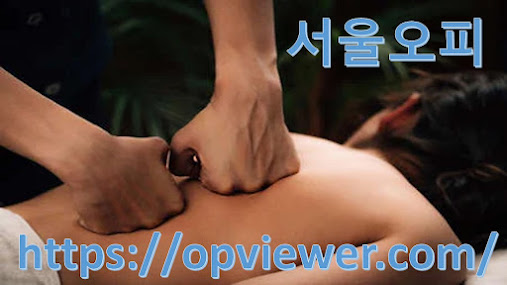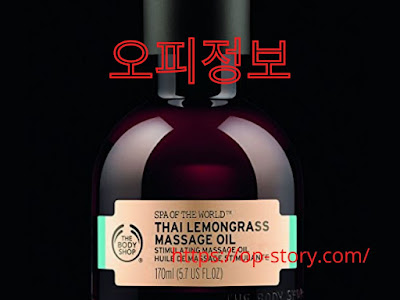Lower Body Refresh
Lower Body Refresh
A full-body knead goes past the neck, back and bears. We offer 부천오피 six methods for growing your lower body range of abilities.
In the event that your customers' shoulders and backs will quite often get more consideration during rubs than their lower bodies, you're in good company. There are loads of motivations to stress those regions, beginning with the way that numerous customers are looking for help from neck and back torment.
However there are disadvantages to denying the lower body its expected.
"According to no one at any point, 'I need to zero in on my quads during this back rub,'" says David Lobenstine, LMT, proprietor of Full Breath Massage in New York City, just as Body Brain Breath, a proceeding schooling supplier. "So we center around the things that they need us to zero in on. However at that point we hazard getting into this cycle where the customer accepts that the main stuff that truly deserve remedial treatment is in the chest area so then, at that point, they request it considerably more, and we center around it significantly more."
However, the consequence of that harmless disregard can be a body out of equilibrium. The cure, obviously, is to commit more consideration regarding the lower half, and to do as such that assists the customer with understanding the advantage of a valid, full-body knead.
It's not just customers who once in a while need a prod to give the lower body the consideration it merits, in any case. Rub advisors can likewise fall into a groove that focuses on the chest area while tending to the lower body in hurried, redundant design.
Assuming that is you, dread not. The following are six thoughts planned to stir up your way to deal with lower-body rub and to revitalize both you and your customers.
Survey and Educate
Perhaps your best an open door to teach customers about the significance of really focusing on their lower-body muscles, ligaments and belt is the point at which they initially show up for their back rub meeting. Watch them walk. Search for indications of strain, some of which might affirm the side effects they've referenced, just as others that might make the way for a more extensive concentration. Customers disturbed by lower-back torment, for instance, regularly have further issues.
"I'll say, 'I realize you needed lower-back work, so we will zero in on that. However, these different regions may likewise be helping with that aggravation that you're feeling, so would you care if we work that, as well?' And they never say no," says Jill Felland, LMT, who rehearses in San Diego, Calif. "I'll work the low back first so they can perceive how close it is, however at that point I'll move to the glutes-to the hamstring connection, explicitly, before I return to the lower back. Then, at that point, they understand that circuitous contact and treatment works."
Two-sided Lengthening
One more method for extending the focal point of a back rub past the chest area is to connect with the upper and lower body simultaneously. Respective extending working all the while across the body on, say, the left shoulder and the right hip-is one procedure for doing as such.
You're putting your hands on the facade of one shoulder and furthermore on the facade of the contrary hip, and afterward inclining your body weight in-and making that consciousness of the customer's capacity to sink or soften in that 'X' design, first in one plane and afterward in different," says Lobenstine. "The absolute most impressive procedures are the ones that show the customer how [the upper and lower body] are associated. At the point when you stretch, and it feels astounding in light of the fact that the customer is in the contrary situation for such countless hours daily, you're growing the customer's feeling of how they can feel good in their own body and how they can move on the planet."
Bounce In Feet First
To guarantee that your next full-body rub doesn't give quick work to the lower body, then, at that point, start at the feet and move gradually up. Laura Jenkins, LMT, proprietor of the Massage Studio of Philadelphia, frequently starts by burning through two minutes on each foot, mellowing the belt in the lower body while clarifying how lower-body issues can regularly be the underlying driver of chest area torment.
"Giving your customer data normally influences them to try the lower body out," Jenkins says.
She begins with delicate clench hands once again the cover to keep away from introductory sensitivity or responsiveness, musically squeezing into the soles, then, at that point, gets and crushes the heels, utilizing the impact point of her hand or thumb to press into the parallel edge of the sole. Afterward, when the customer is prostrate, she grabs hold of the two sides of the foot and tenderly controls the metatarsal regions by exchanging developments between hands.
Next come the calves, where Jenkins begins with light-yet firm effleurage strokes and checks to measure the customer's response. For customers who can deal with it, she folds two hands over the lower leg muscles with her thumbs compromising, then, at that point, works initially down the focal point of the gastrocnemius, before additionally running her fingers down the gastrocnemius' horizontal perspectives, in some cases working the soleus also.
While have arrived, don't disregard the tibialis front (TA), inclinations Felland. She's seen another class arise lately: individuals who became stationary during the pandemic and are presently attempting to get in shape rapidly via preparing for a major race or another game.
"They're going from zero to 100, and frequently they begin encountering torment because of the absence of curve in their foot," Felland says. "Working the TA gives quick alleviation for the curve."
Gravity is your companion. Working enormous lower-body muscle gatherings, for example, the hamstrings can put rub advisors in danger of strain and injury. Lobenstine proposes a basic arrangement: Don't buckle down. He proposes bringing down the table, dialing back significantly (he regularly urges understudies to work at half speed), and designating the difficult work to gravity.
"You give your body weight into the stroke-you contact the customer and afterward you sink in, rather than muscling. Then, at that point, you simply watch out for what comes next," Lobenstine says.
One model is twofold lower arm leg extending, where Lobenstine inclines in, allows his arms to enlarge, and without attempting to constrain anything, he allows the customer's tissue to direct the speed and span of the stroke. That is the point at which they have those impactful minutes as, 'I didn't realize I was conveying such a lot of pressure in my calf.' Those minutes possibly happen when we give the customer the space to feel those muscles, and afterward feel the progressions that are conceivable."
Felland at times takes the body weight thought considerably further, moving onto the table for additional influence when working with athletic customers with particularly enormous hamstrings, like muscle heads. In those cases, she first lets them know she'll get on the table, then, at that point leisurely, and in the wake of mooring her body to guarantee strength positions the region of her knee only distal to the patella on the customer's hamstring. She then, at that point, shakes gradually to and fro until she's at the ideal profundity, requesting that the customer tell her when she arrives at what she calls the "harms so great" point, where the muscle is fixing barely enough. When the customer gives that sign (or prior, on the off chance that she detects pressure), she stands firm on the foothold for around 30 seconds, gradually moves her knee the entire way to where the hamstring connects close to the glutes. The interaction can require as long as 10 minutes for each side.
That sort of back rub can deliver particularly huge profits for customers occupied with athletic preparation. Hamstring knead intensely expanded adaptability among female competitors, as indicated by a recent report in the Journal of Bodywork and Movement Therapies.
Working the glutes, hip flexors and internal thigh muscles can be off-kilter. Be that as it may, with appropriate hanging, great customer correspondence and setting clinical assumptions, working these regions can be exceptionally compelling.
"We have such a wavering with regards to chipping away at the glutes since we're worried that our customers will imagine that we're accomplishing something sexual or improper, despite the fact that it's clearly not. In any case, the glutes can turn into this 'restricted air space' where we simply stay away," says Lobenstine. "All things considered, we do that at our risk, in light of the fact that the glutes are basically the pivot between the chest area and the lower body, so we need to track down successful ways of dealing with them that vibe agreeable for ourselves and for our customers."
Jenkins tends to that by working over the cover while the customer is inclined, and utilizing delicate yet-firm petrissage or manipulating strategies with a delicate clench hand. She then, at that point, checks the customer's solace level prior to continuing on, and utilizes her elbow to address the region around the top of the femur, just as the sacroiliac joint.
Lobenstine's leaned toward approach is gluteal liquefying: reaching the glutes with a major (and less compromising) part of your body, for example, your lower arm, delicate clench hand or the impact point of your hand, then, at that point, utilizing thumbs to go under the glutes and encompassing muscles prior to lifting and holding-then releasing them and permitting the muscles to relax and sink.
"We're making a detached arrival of these muscles, not delving in and constraining them to do anything, yet standing firm on them in this footing somewhat away from the skeleton, then, at that point, letting them sort of seepage back into a more loosened up position," he says.
Past the Foam Roller
Another age of competitors and individuals who have worked with actual advisors have raised the already mysterious iliotibial band to star status. Many individuals attempt to work the IT band themselves utilizing a froth roller, yet it "truly profits by another person's prepared hands," says Jenkins. Without a doubt, a 2019 survey in Sports Med observed that rollers aren't profoundly solid in distinguishing trigger focuses.
Jenkins' methodologies include working over the cover while 서울오피 the customer is recumbent, starting with cadenced petrissage to begin loosening up the muscles, then, at that point, utilizing her lower arm to add pressure.
The thought is to isolate the IT band from adjacent muscles like the horizontal quadriceps and hamstrings.
"There can be a great deal of blockage, or sticking of the muscle to the IT band," says Lobenstine.




Comments
Post a Comment